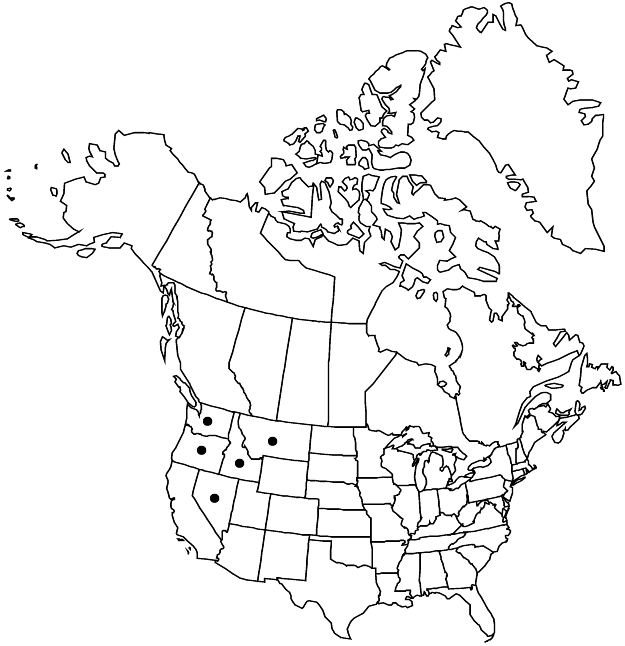Heuchera grossulariifolia
Mem. New York Bot. Gard. 1: 196. 1900,.
Herbs acaulescent; caudex branched. Flowering-stems 15–65 cm, glabrous or short-stipitate-glandular. Leaves: petiole glabrous or short-stipitate-glandular; blade cordate or orbiculate, shallowly 3–5-lobed, 1–7 cm, base cordate, lobes rounded, margins dentate, apex obtuse, surfaces glabrous or short-stipitate-glandular. Inflorescences dense, interrupted. Flowers: hypanthium weakly bilaterally symmetric, free 1.2–1.9 mm, cream, broadly campanulate, 4–7 mm, short-stipitate-glandular; sepals erect, often red-tipped, equal, 2 mm, apex rounded; petals erect, pink or white, spatulate to narrowly oblanceolate, (clawed), unlobed, 1–3 mm, margins entire; stamens included 1.5 mm; (filaments strongly incurved, shorter than and almost concealed by anthers); styles included to 1 mm, 0.5 mm, 0.1+ mm diam. Capsules ovoid, 5 mm, beaks divergent, not papillose. Seeds dark-brown, ellipsoid, 0.6 mm. 2n = 14, 28.
Phenology: Flowering May–Aug.
Habitat: Grassy hillsides, rocky canyon walls, alpine talus slopes
Elevation: 100-3400 m
Distribution

Idaho, Mont., Nev., Oreg., Wash.
Discussion
Heuchera grossulariifolia includes both diploids and autotetraploids. K. A. Segraves and J. N. Thompson (1999) analyzed floral traits and flowering phenology in diploid and autotetraploid plants. Overall, plant size was greater in tetraploids than in diploids; flowers of tetraploids were larger (average hypanthium 6.5 mm) than those of diploids (average hypanthium 5.5 mm) and had a slightly different shape and phenology, but the diploids and tetraploids were not assigned taxonomic status in their study. Diploids and tetraploids were mixed in some populations, where characters intergraded (D. E. Soltis, pers. comm.). The autotetraploids have had two to seven independent origins from diploid progenitors, and do not represent a monophyletic lineage (Segraves and Thompson; Segraves et al. 1999).
Selected References
None.
Lower Taxa
"full" is not a number.